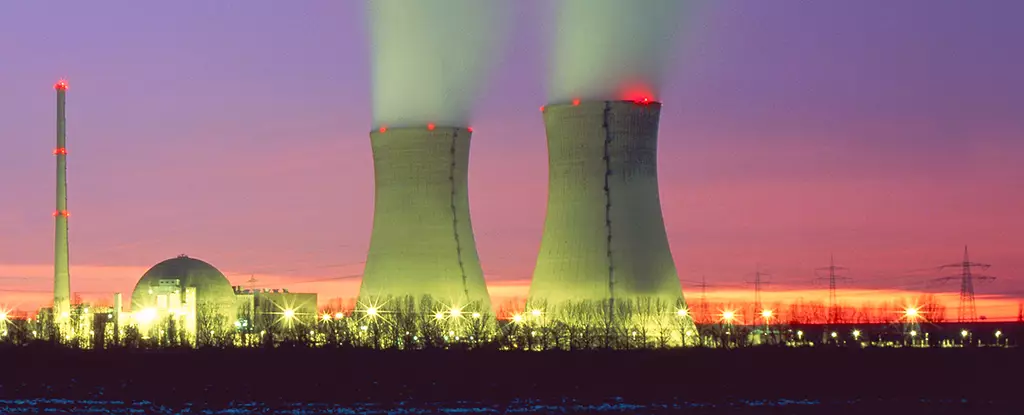Nuclear energy, often hailed as the savior against climate change due to its minimal greenhouse gas emissions, is far from a perfect solution. The inherent complexities of managing radioactive waste pose significant environmental and ethical dilemmas. While it generates approximately 10% of global energy requirements, the future of nuclear power is frequently overshadowed by its waste management issues. Critics highlight the risks that accompany the long-term storage of radioactive byproducts, yet proponents argue for innovative solutions that could redefine the value of nuclear technology. One such potential radical shift is emerging in the form of nuclear batteries.
A Scientific Leap Forward: Harnessing Radioactive Waste
Recent breakthroughs in battery technology have ignited discussions within scientific communities about the possibility of transforming nuclear waste into a functional energy source. Researchers from Ohio State University have undertaken the ambitious task of utilizing ambient gamma radiation emitted from radioisotopes—specifically, cesium-137 and cobalt-60—to power microelectronics. This concept is a triumph of ingenuity: rejuvenating something deemed wasteful and dangerous into a valuable energy source. This “treasure from trash” notion is not merely an optimistic mantra but a substantial scientific endeavor.
The approach involves a two-step conversion process, where scintillator crystals first convert radiation into light, which is then transformed into electricity by photovoltaic cells. This dual mechanism allows previously dormant radioactive waste to find new life as a power source, primarily for microchips and sensors. While current applications are limited to low-power devices, the scalability that researchers envision could revolutionize the field of electricity generation and consumption.
Thrilling Developments and Their Implications
The experimental results speak for themselves; with prototypes generating harnessable power output in the range of nanowatts to microwatts, the findings represent significant advancements for power generation using nuclear sources. Such output may seem meager at first glance, but consider the applications: equipment used around nuclear facilities, including sensors and monitoring devices, that require minimal maintenance. The idea that these batteries could operate safely, pose no pollution risks, and potentially last long-term would fundamentally change the landscape for energy sourcing in nuclear environments.
What makes this development notably thrilling is its potential implications. Should researchers refine these prototypes and overcome limitations concerning radiation hardness—a critical aspect for both scintillators and photovoltaic cells—the technology could eventually extend beyond mere nuclear facilities. Picture this: devices utilizing radioactive isotopes to generate power on distant space missions or in extreme environments where conventional power sources are infeasible. This could be the future of sustainable energy sources—once deemed hazardous—proving vital in otherwise unreachable terrains.
The Ethical and Practical Considerations
While the scientific prospects are stunning, there lies an urgent need for careful deliberation around the ethical implications of using nuclear waste. The conversion of waste into energy, while ingenious, raises questions around safety, surveillance, and public apprehension. Should nuclear batteries become viable for civilian applications, consider the societal concerns tethered to employing a presumed ‘hazardous’ material for power generation. Regulatory frameworks must evolve in tandem with technological advancements to address these very real anxieties.
Industry experts must engage openly with local communities to dispel fears and communicate the safety protocols accompanying any nuclear technology, including batteries powered by radioactive waste. Transparency will be vital; as this new technological avenue emerges, informed dialogues with the public will pave the way for acceptance and responsible implementation.
Final Reflections on a Promising Horizon
The exciting development of nuclear batteries shines a light on a much-needed reconceptualization of how we view nuclear waste. By identifying methods to repurpose this waste into usable energy, we open ourselves to new possibilities in the quest for sustainable energy solutions. The scientists championing these innovations provide hope that societal dependency on fossil fuels can be alleviated through creative and responsible application of nuclear technologies.
The journey remains fraught with challenges, from regulatory hurdles to public acceptance, yet we must remain optimistic that the scientific advancements will continue. Ultimately, the ability to turn what was once viewed solely as a liability into an asset gives testament to human ingenuity and the spirit of innovation; a necessary spark for addressing the pressing energy crisis.


Leave a Reply